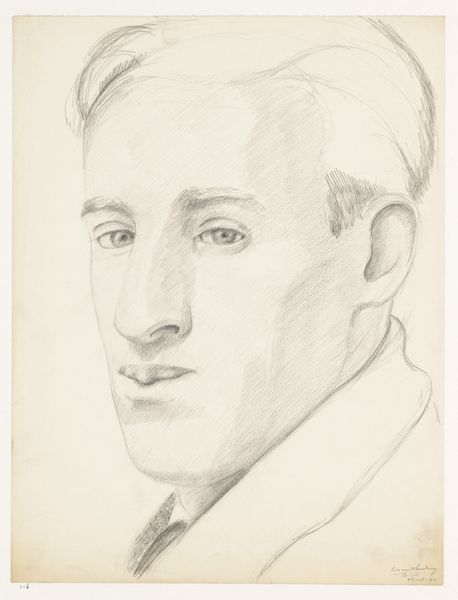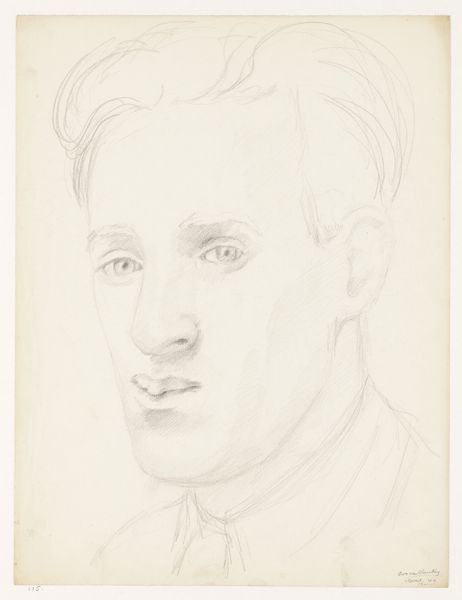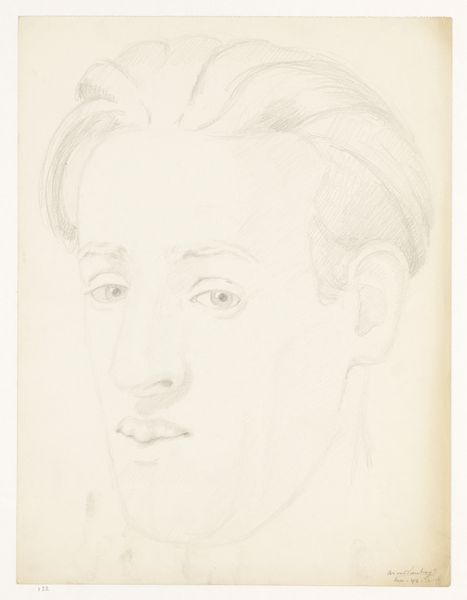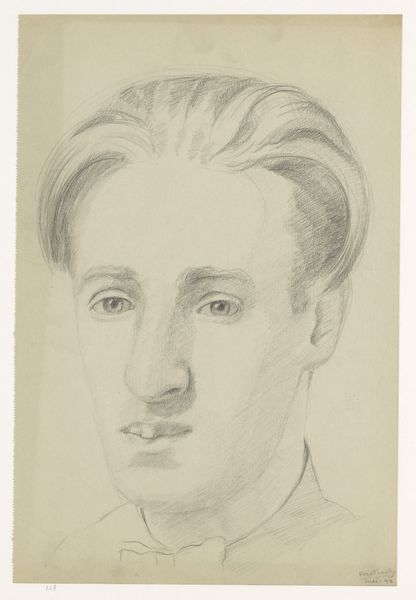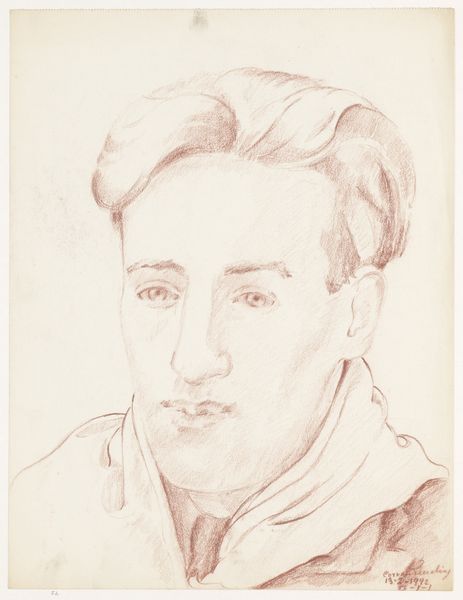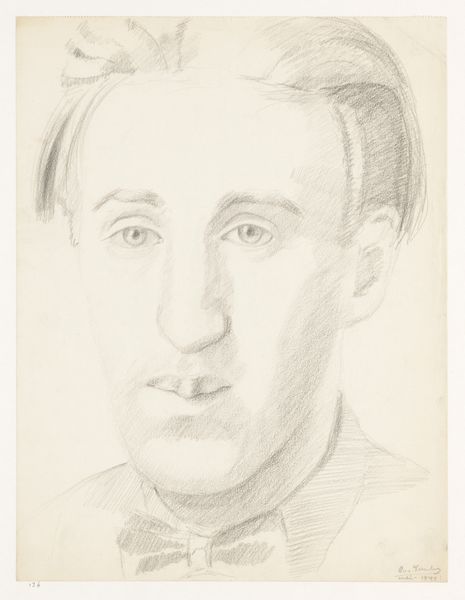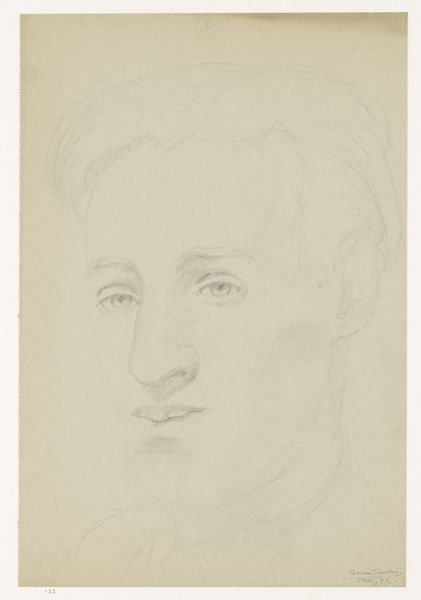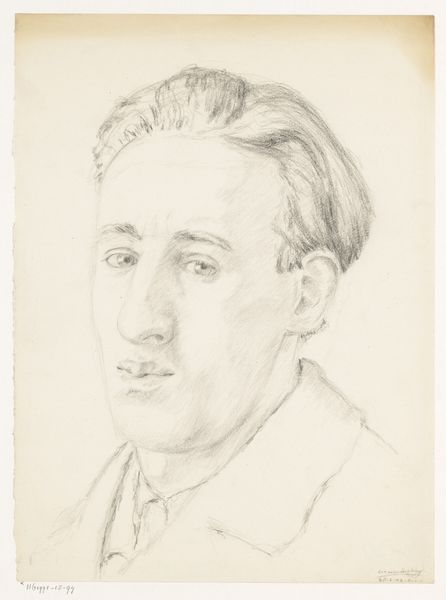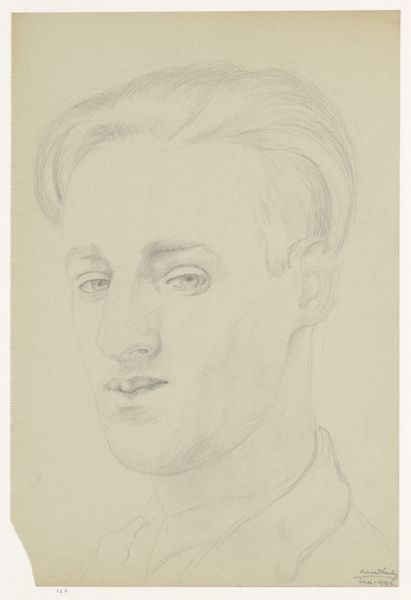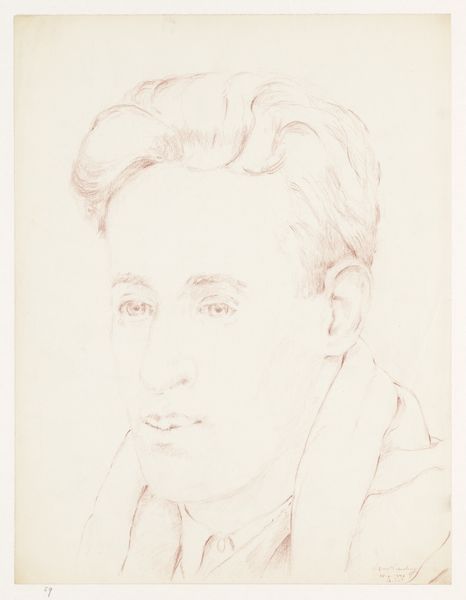
drawing, pencil, graphite
#
portrait
#
pencil drawn
#
drawing
#
self-portrait
#
caricature
#
pencil drawing
#
pencil
#
graphite
#
portrait drawing
#
realism
Dimensions: height 35.5 cm, width 27.0 cm
Copyright: Rijks Museum: Open Domain
Editor: This is Cor van Teeseling’s "Self-portrait, 17 mei," potentially made between 1942 and 1945. It's a delicate pencil drawing. There's a raw quality to the lines; I find it quite vulnerable. What's your take on it? Curator: Considering the period it was created, between 1942-1945, during World War II, I look at the very *making* of this portrait. Graphite wasn’t just a neutral material then; obtaining it, and paper, would have been a challenge. The act of self-representation during wartime raises interesting questions about survival, identity, and the very basic human need for creation and expression. Does this drawing transcend its own time? Editor: That's fascinating. So the simple act of acquiring materials becomes a statement itself? Is that what you mean? Curator: Exactly! The materials themselves and the labor involved become intrinsically linked to the socio-political context. A pencil line, a subtle shadow: each one becomes a testament to the artist's perseverance. How was this paper sourced? Was this work produced in the open or in hiding? Was the process of mark making a challenge because the act was prohibited? Editor: That totally shifts my perspective. It's no longer just a face; it’s about the means and conditions of its production! Curator: Precisely. By examining the materiality and process, we uncover layers of meaning beyond just visual representation. How can we re-evaluate historical categories of fine art by engaging this perspective of materials? Editor: That’s given me so much to consider about not just this work, but how I look at everything! Curator: Indeed! Examining art through a materialist lens really exposes the intersection of art, labor, and the social landscape of its time.
Comments
No comments
Be the first to comment and join the conversation on the ultimate creative platform.
